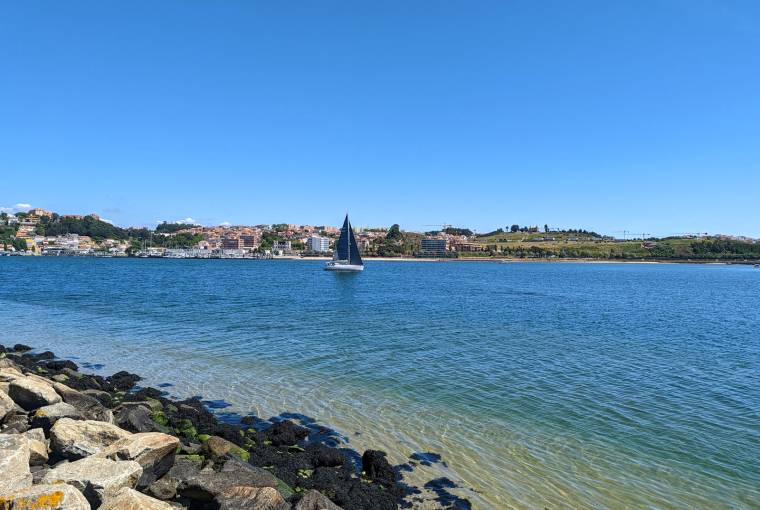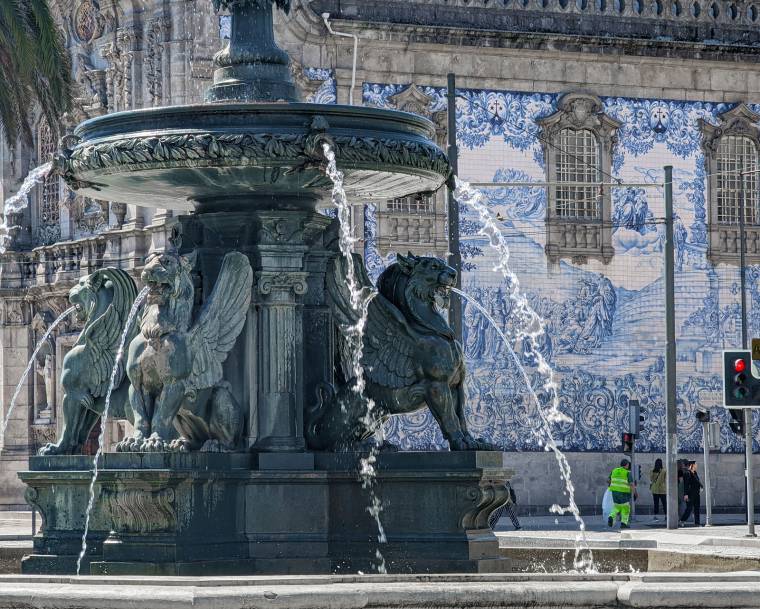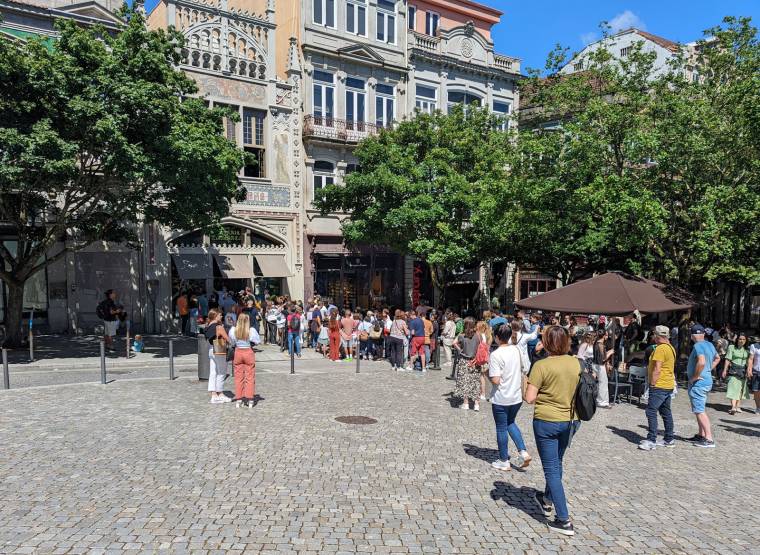The Place Pinto Leite, previously known as the Casa do Campo Pequeno is another wonderful example of faded grandeur in Porto.This imposing house was built to the order of Joaquim Pinto Leite in the mid 19th century. He belonged to one of the wealthiest and most influential families in Portugal.What happened between this time an 1966, I'm not sure. However this is when the state bought the house to turn into a Music Conservatory. This happened in 1975 but in 2008 the building became empty.Since then it has gradually faded, although some level of repair seems to have been maintained. In recent years the house has been bought and there are plans afoot to convert it into a cultural / artistic venue.
Related images
The Jardim do Largo da Maternidade Júlio Dinis, which translates to the 'garden of the maternity square of Júlio Dinis'. The square and garden part are quite obvious, but who was Júlio Dinis?Dinis was the pseudonym of Joaquim Guilherme Gomes Coelho a doctor and novelist from Porto. Born in 1839 he went on to become deputy professor of Porto's medical school only to be struck down by tuberculosis. He then turned to writing and wrote a few very popular books, the most famous of which were based on his experiences growing up with an English mother in Portugal. Sadly within a few years the TB killed Dinis at the young age of 31.In the square is a fountain and on it the date 1840. This tells us that the square predates Dinis as he was a baby when it was built. The other part of the name refers to the maternity hospital, which is located right on the edge of the square. Then again this is named after Julio Dinis too.Anyway, it's a very pleasant little square with some nice looking cafes around it.
Related images
A view across the River Douro as it nears the end of its journey to the Atlantic Ocean. This is the last section of the river between the Arrabida bridge and Foz do Porto.On a sunny day like this with clear blue sky the water looks fairly tempting. However, I don't know what the water quality is like these days, probably much improved, but I would still guess it has a fair way to go before I'd want to swim here!
Related images
Looking down Rua dos Clerigos into the dip at the bottom of Avenida dos Aliados before the road rises steeply on Rua de 31 de Janeiro. At the top of the hill is the Igreja de São Ildefonso and the azulejo facade in the middle is that of the Igreja de Santo António dos Congregados.This really is very much the centre of the old part of Porto with the town hall being just to the left and Sao Bento train station just to the right.
Related images
Traditional black and white paving on Rua de Miguel Bombarda in Porto. Known as calçada, this type of paving is traditionally used on pedestrianised areas and squares. This isn't the most flamboyant example you'll see in Portugal, you'll have to got to Lisbon for that, but it look nice - especially on Google maps!Rua de Miguel Bombarda is fairly central and branches off from Rua de Cedofeita. It is known as something of a hub for art galleries and the likes.
Related images
A souvenir shop in Porto. This one is located next to Clerigos so features a few more Clerigos-themed fridge magnets and statuettes than most.The rest of the stuff is fairly standard; lots of azulejos themed designs, the obligatory Barcelos cock bottle openers and a bunch of tram-related nik-naks!
Related images
A closer look at some of the classic blue azulejos tiles which are so iconic to Portugal. This particular example is very well known and can be found on the side of the Igreja do Carmo in Porto. The tiles were painted by Carlos Branco to a design by Silvestre Silvestri and are more recent than most people think. The actual Baroque style church was built in the 1750s but the tiles, for which it is best known, were only added in 1912.The design on the tiles is said to reflect the founding of the Carmelite Order on Mount Carmel.
Related images
Rua Santa Catarina is Porto's main shopping street. situated on this long, straight pedestrianised street are all the big high street names like Body Shop, Fnac, Zara and Adidas. It is also home to the Via Catarina shopping mall which contains plenty of other big brands. As you can see Rua Santa Catarina gets pretty busy on a Saturday afternoon.The street isn't just shops; it is home to what is possibly Porto's most famous cafe, the belle epoch styled Cafe Majestic. There's also the wonderful little azulejo-clad Capela das Almas around halfway along the pedestrianised section.
Related images
The Fonte dos Leões (Lion fountain) sits in the square next to the Igreja dos Carmos. Built in the 19th century, this octagonal Romanesque marble fountain features 4 lion statues, although they are actually appear a little griffin-like with their wings.The backdrop are the wonderful azulejos of the Carmo church. Dating back to 1912 these tiles depict the founding of the Carmelite Order and Mount Carmel.
Related images
People queing to see the rather splendidly fantastic interior of Livraria Lello in Porto. The bookshop was made famous through its association with the Harry Potter books.Years back, J K Rowling worked as an English teacher in Porto. Given the city's abundant quirkiness and charm it is usurping that she drew a certain amount of inspiration for her books from the city.However, regarding Livraria Lello, I can say the magic is firmly gone...









